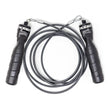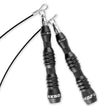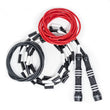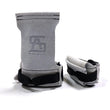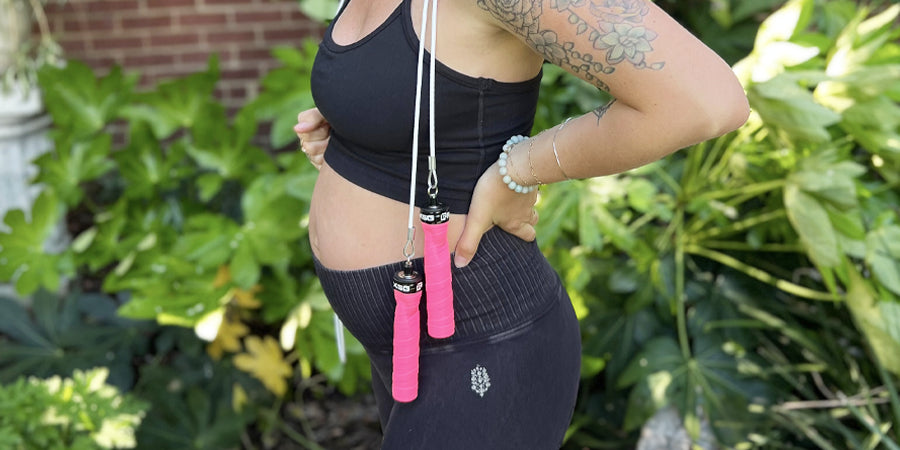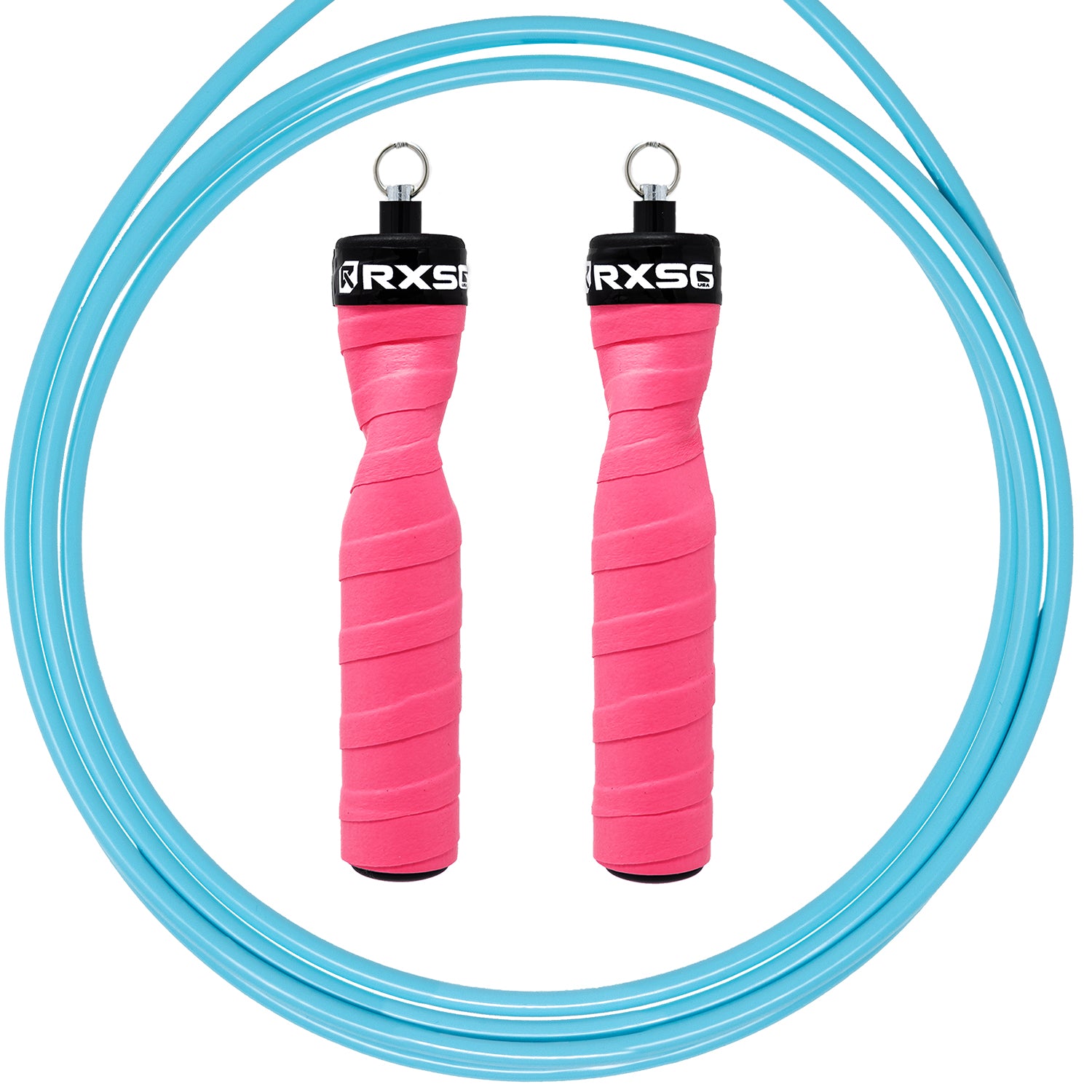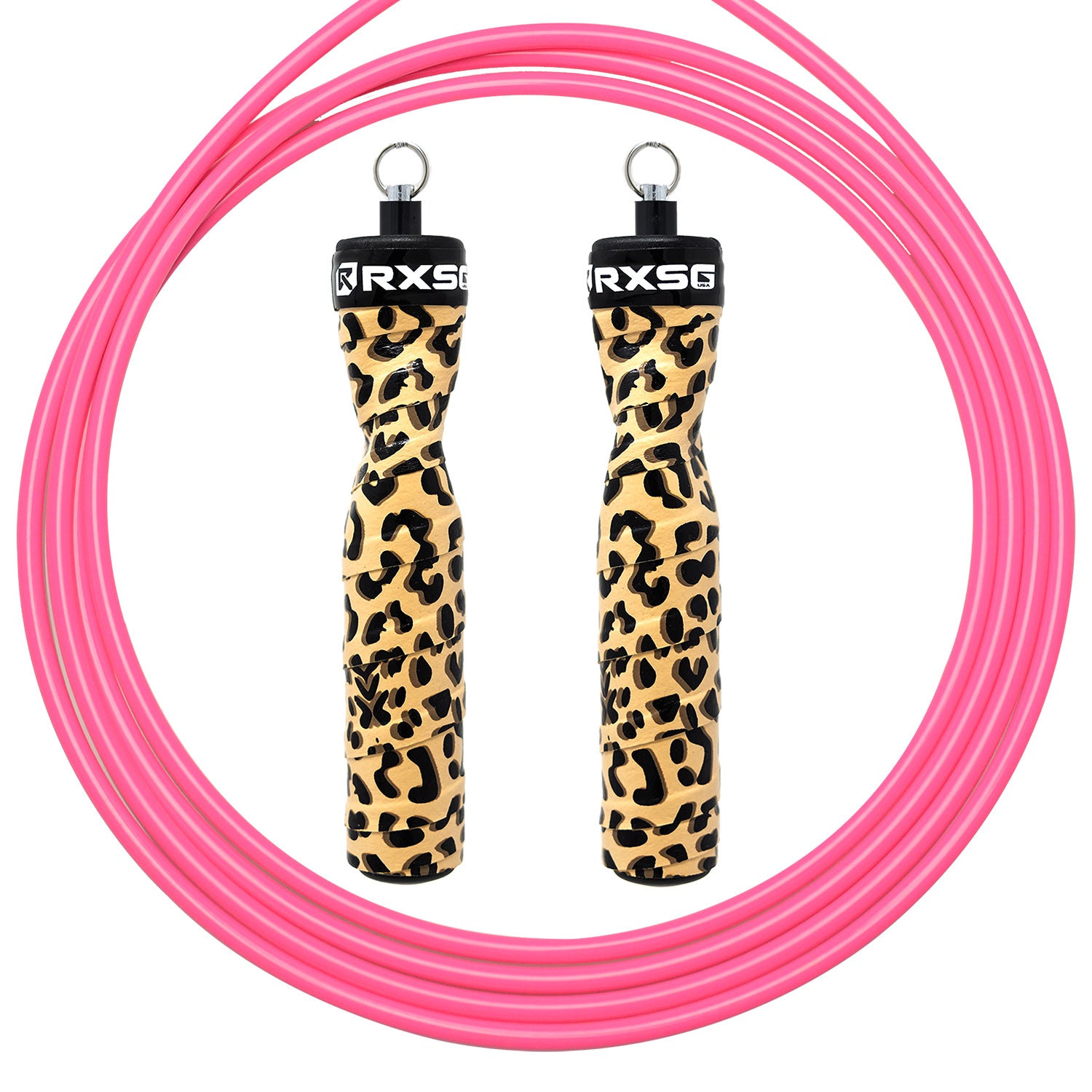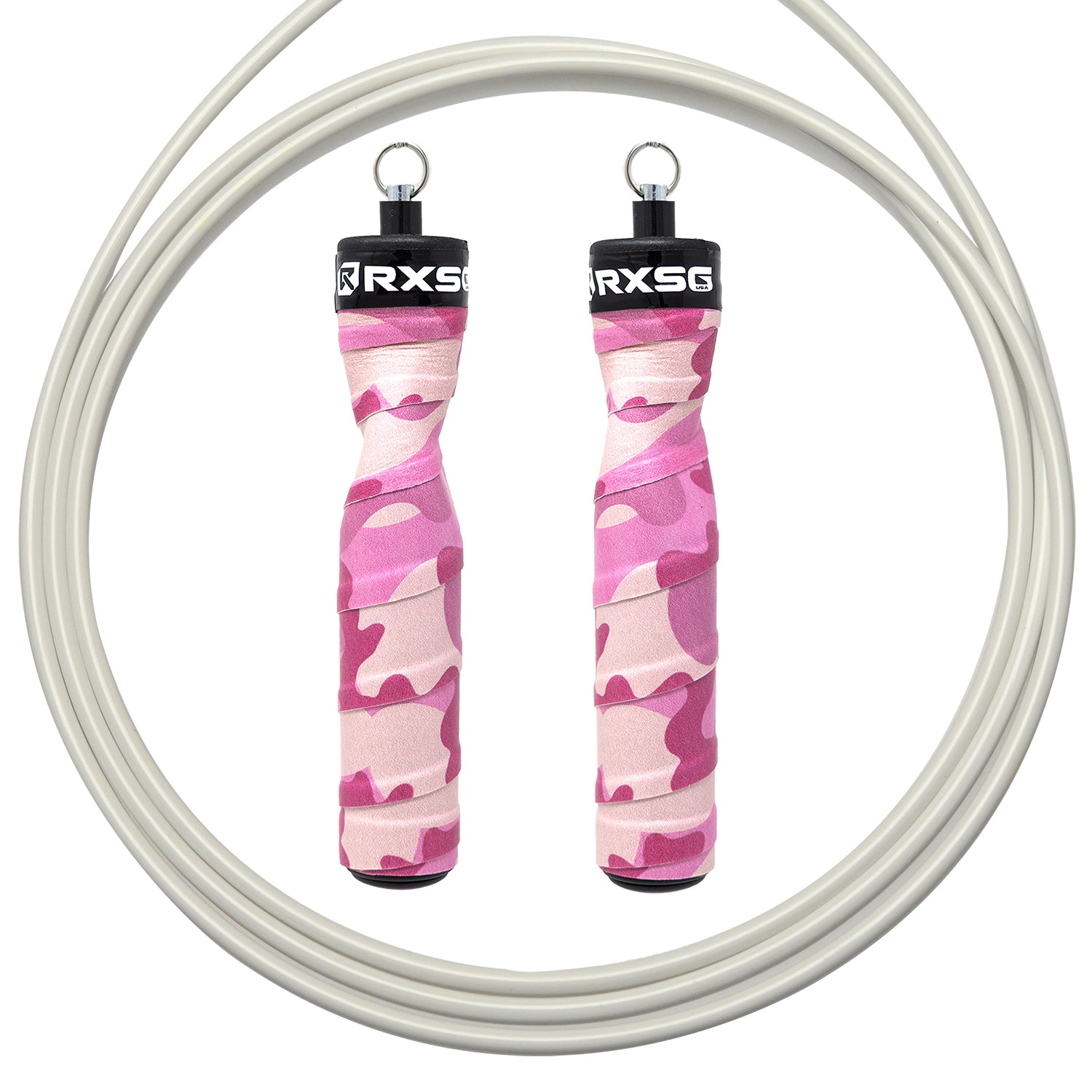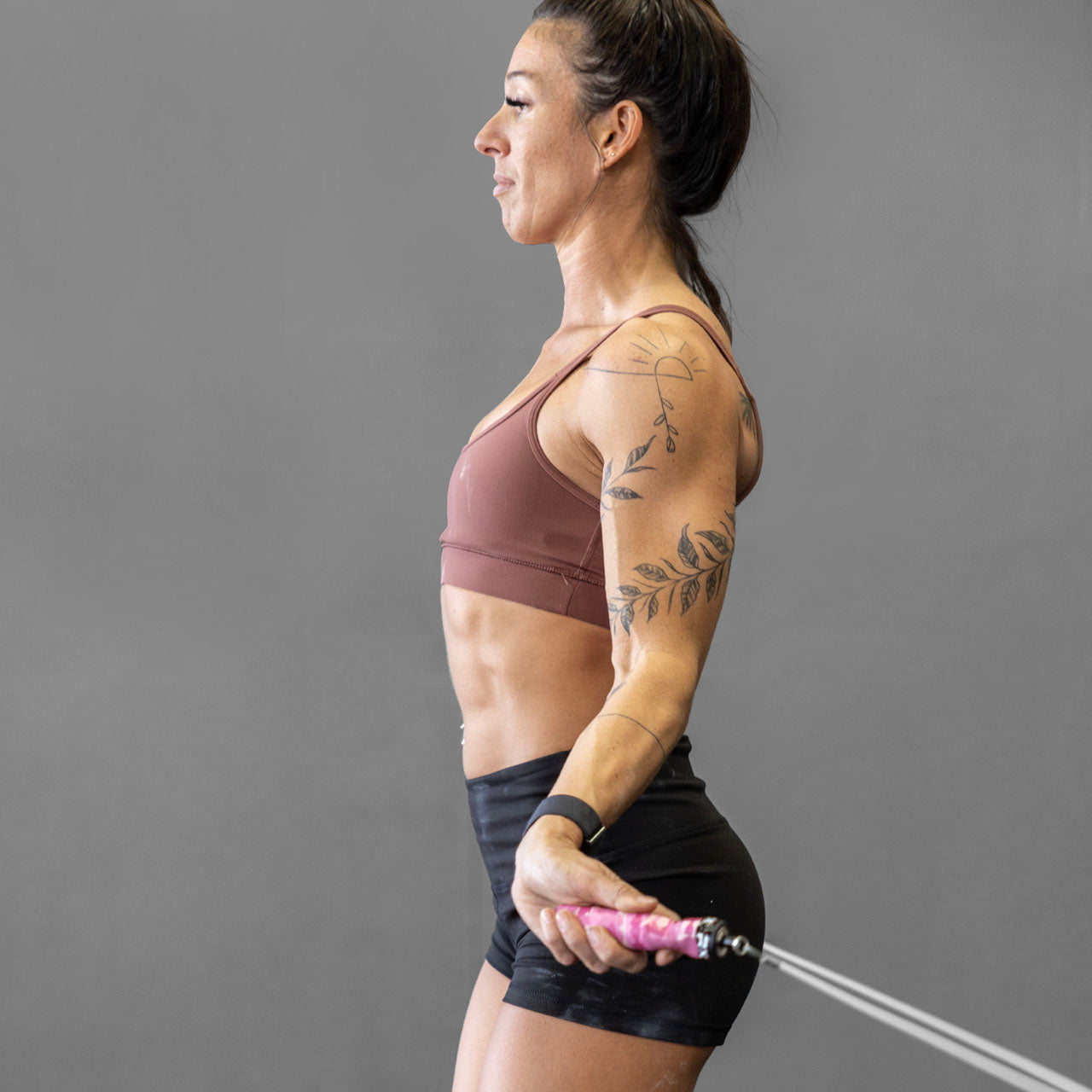Is it safe to jump rope while pregnant?
First things first, let me reassure you that maintaining an exercise routine during pregnancy can be not only safe but also recommended & beneficial for both you and your bun(s) in the oven. It's Recommended by the ACOG for moms in uncomplicated pregnancies to start and remain active before, during and after pregnancy!.
However, when it comes to high-impact activities like jumping rope, there are a few extra considerations to keep in mind.As with any exercise regimen during pregnancy, safety is paramount. It's crucial to consult with your healthcare provider. Every pregnancy is unique, and your doctor can provide personalized advice based on your health, fitness level, and any specific risk factors.Once you've got the green light from your healthcare provider, it's time to lace up and get moving! But before you start skipping away, here are some essential tips to ensure a safe and comfortable experience:
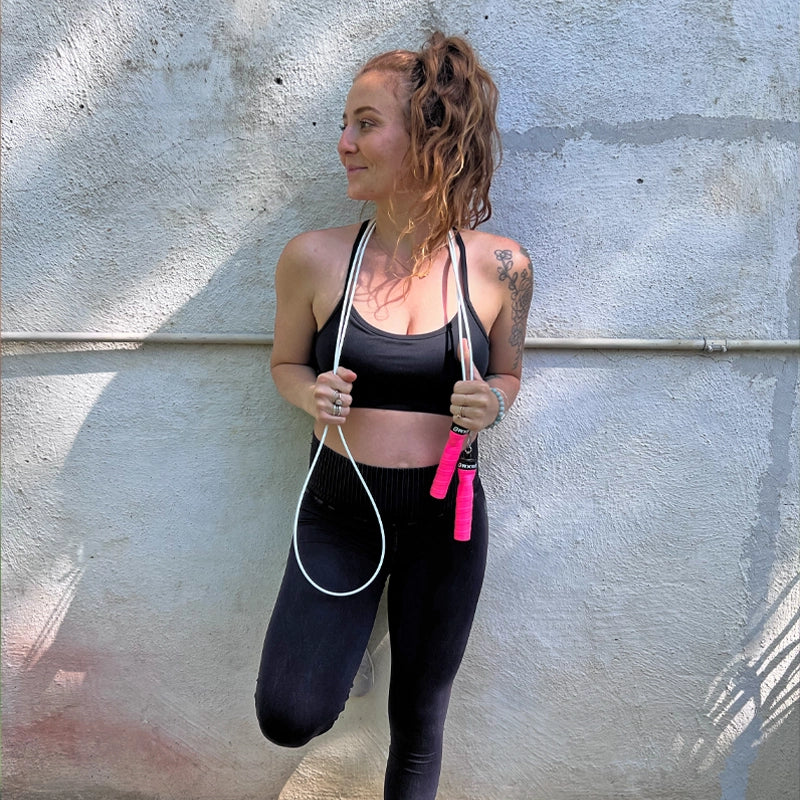
- Listen to Your Body: Pregnancy is a time when your body undergoes significant changes, both internally and externally. Pay close attention to how you feel during exercise. If something doesn't feel right, stop immediately and take a break. It's essential to honor your body's cues and never push through discomfort or pain. What's safe for one parent might not be tolerable to another. It really depends on your own strength, function and body awareness.
- Modify as Needed: As your pregnancy progresses, you may find that certain exercises become more challenging or uncomfortable. Don't hesitate to modify your workouts to suit your changing body. With jumping rope, you might opt for lower-impact variations such as gentle hopping or side-to-side movements. The goal is to keep moving while prioritizing safety and comfort.
- Choose the Right Gear: Investing in a good quality jump rope can make a world of difference. This is why I love Rx Smart Gear (code TRUELOVE) because making sure you aren't using one that is too long or short can save your sanity and shins! Wearing supportive athletic shoes with adequate cushioning and stability is also crucial, especially as your body undergoes changes in balance and weight distribution.
- Warm-Up and Cool Down: Just like with any workout, it's essential to warm up your body before jumping into intense activity. Spend a few minutes doing light dynamic stretches to prepare your muscles and joints. Similarly, don't forget to cool down afterward with gentle stretching to promote flexibility and prevent muscle stiffness. This can also help prevent leaking. Tight hips and pelvic floor muscles can lead to leaking.
Let's dive deeper into alignment and signs of intolerance when jumping rope during pregnancy:Check out this reel if you are experiencing leaking while you jump rope or jump in general!
Check out this reel if you are experiencing leaking while you jump rope or jump in general!
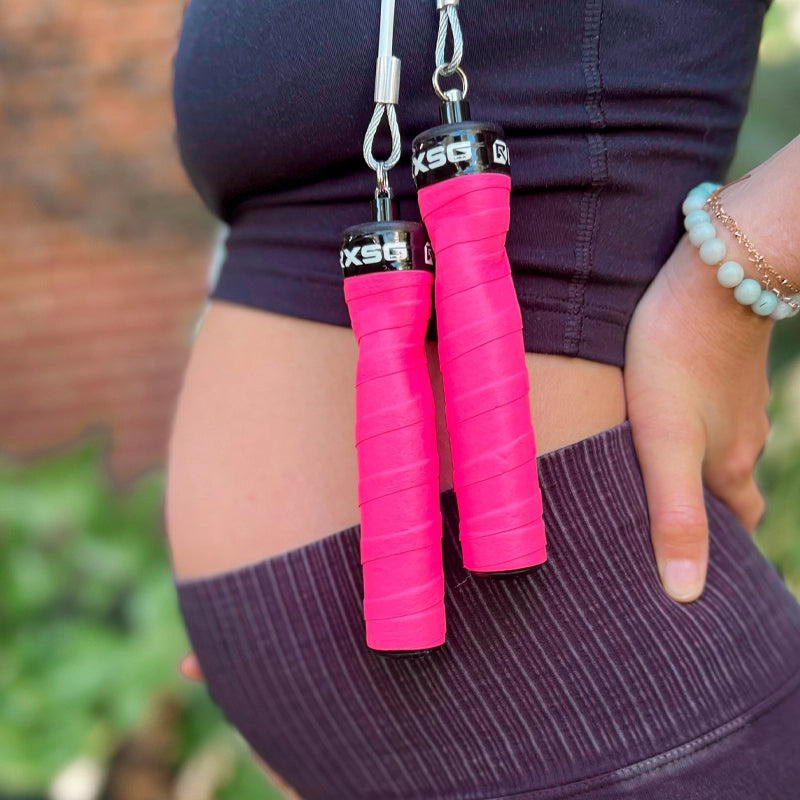
Proper alignment is essential for maintaining stability and minimizing strain on your body, especially during high-impact activities like jumping rope. Focus on keeping your head and ribcage stacked directly over your pelvis throughout the movement. This alignment not only supports optimal breathing mechanics but also helps manage intra-abdominal pressure, which is crucial during pregnancy.
Here are some alignment tips to keep in mind:
- Head Position: Keep your head in a neutral position, with your gaze forward and chin parallel to the ground. Avoid tilting your head up or down, as this can strain your neck and upper back as well as send extra pressure down to your core tissues and pelvic floor.
- Ribcage Alignment: Imagine stacking your ribcage over your pelvis. Not gripping the ribs or allowing them to flare open. This helps maintain length in your torso and prevents slouching or overarching of the lower back.
- Pelvic Alignment: Engage your core muscles to gently draw your belly button towards your spine, without tucking your pelvis under or sticking your booty out. This neutral pelvic position provides a stable foundation for movement and helps prevent excessive strain on your lower back and pelvic floor.
- Jump Height: you only need to jump as high as your rope is thick! Jumping too high can increase chances of alignment changes, more impact and strain to joints.
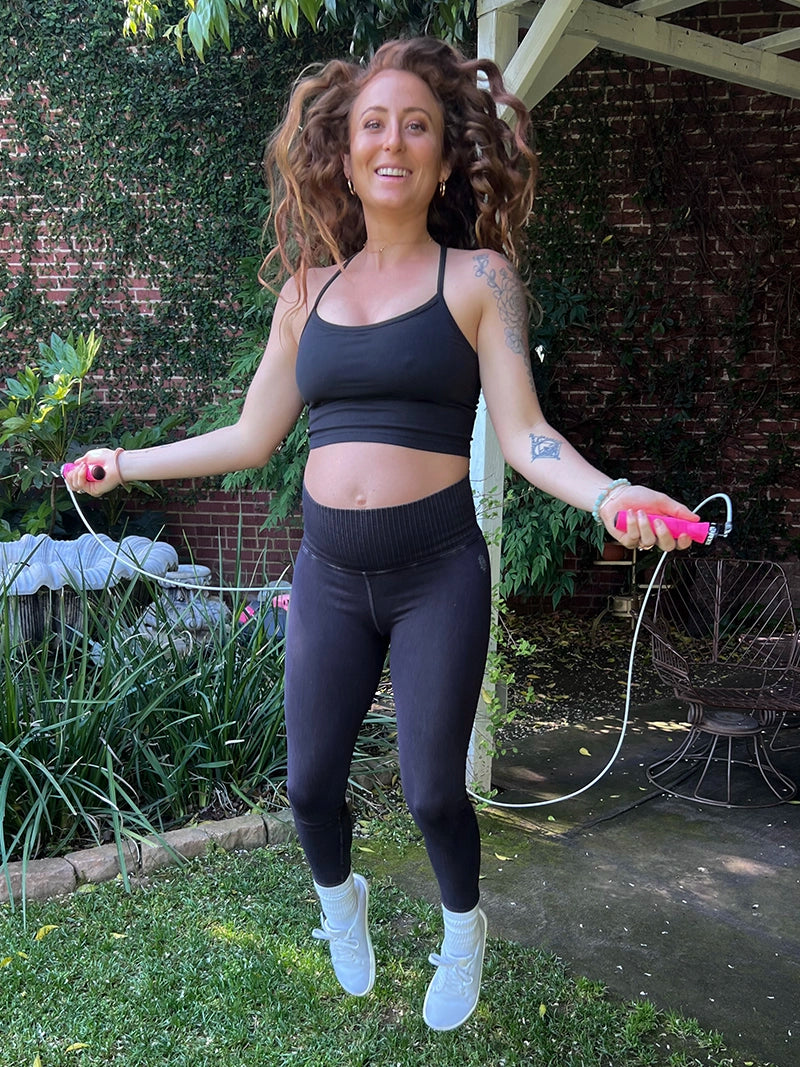
By focusing on proper alignment, you'll not only enhance the effectiveness of your workouts but also reduce the risk of discomfort or injury.
Signs of Intolerance:
While staying active during pregnancy is important, it's equally vital to listen to your body and recognize signs of intolerance or overexertion. Pay attention to how you feel during and after jumping rope, and be mindful of any warning signs that indicate your body may not be tolerating the activity well.
Common concerns and questions about jumping rope during pregnancy:
1. Is it safe for the baby?
When done correctly and with proper precautions, jumping rope is generally considered safe during pregnancy. However, it's essential to be mindful of your body's limitations and avoid excessive strain or impact. If you experience any unusual symptoms such as dizziness, shortness of breath, or vaginal bleeding, stop immediately and consult your healthcare provider.
2. Will jumping rope cause harm to my pelvic floor?
The pelvic floor muscles play a crucial role in supporting the uterus, bladder, and bowels during pregnancy. Focus on maintaining good form and engaging your core muscles to support your pelvic floor. If you have a history of pelvic floor issues or concerns, consult with a pelvic health specialist for personalized guidance. Here are a couple signs that your PF isn’t tolerating the load of jump rope well.
3. Leaking or Urge to Leak:
If you notice any leakage or an urgent need to urinate during exercise, it's essential to address it promptly (stop, breath, check alignment and release tension) and consider modifying your workout routine.
4. Pelvic Pressure, Pain or Heaviness:
Feeling a sensation of pressure, pain or heaviness in your pelvic area during or after jumping rope may indicate that your pelvic floor muscles are under strain. This is your sign to reduce the intensity or duration of your workouts and focus on exercises that provide more support to your pelvic region. Try skipping on one foot vs two.
5. Are there any general warning signs to watch out for?
While jumping rope can be a fantastic way to stay active during pregnancy, it's essential to be aware of warning signs that may indicate you need to stop or modify your workout. These include:
- Vaginal bleeding or spotting
- Severe abdominal pain or cramping or uterine contractions
- Persistent dizziness or lightheadedness
- Shortness of breath unrelated to exertion
- Fluid leakage from the vagina
- Decreased fetal movement
Shop All Ropes
If you experience any of these symptoms, stop exercising immediately and seek medical attention.
Remember, your body is undergoing significant changes during pregnancy, and it's normal for your exercise tolerance to vary as your pregnancy progresses as well as from day to day. Meet yourself where you are, honor your body's needs, and always prioritize safety and comfort above all else.
By staying mindful of alignment principles and recognizing signs of intolerance, you can enjoy the benefits of jumping rope while pregnant while minimizing the risk of discomfort or injury.
In conclusion, jumping rope can be a safe, FUN and an effective form of exercise during pregnancy, but it's crucial to approach it with caution and mindfulness. Always consult with your healthcare provider before starting any new exercise regimen, and listen to your body throughout your workout. Remember, pregnancy is a beautiful journey, and staying active can help you feel empowered and prepared for the incredible adventure ahead. So, lace up those sneakers, grab your RXSG jump rope, and let's jump into this together.
You can use my Rx Smart Gear Code TRUELOVE at checkout to get a jump rope perfect for your skill level and height!
With love and sweat, Jesse Truelove

